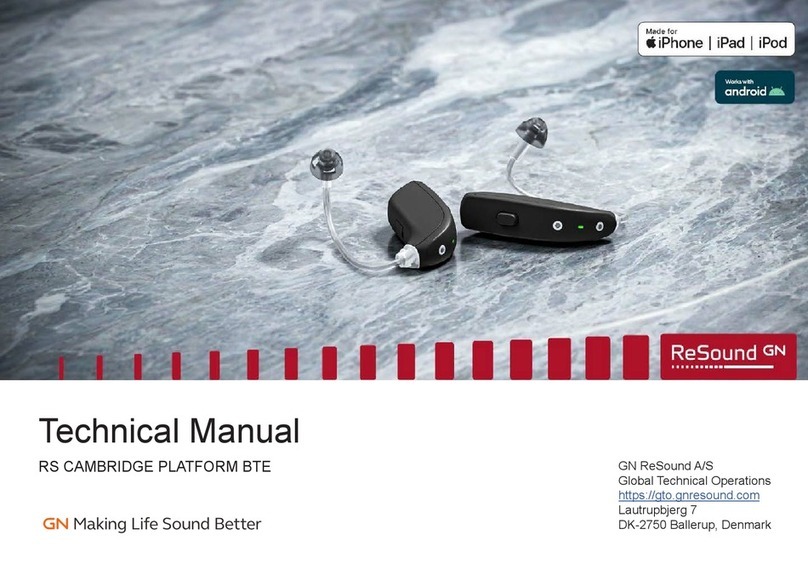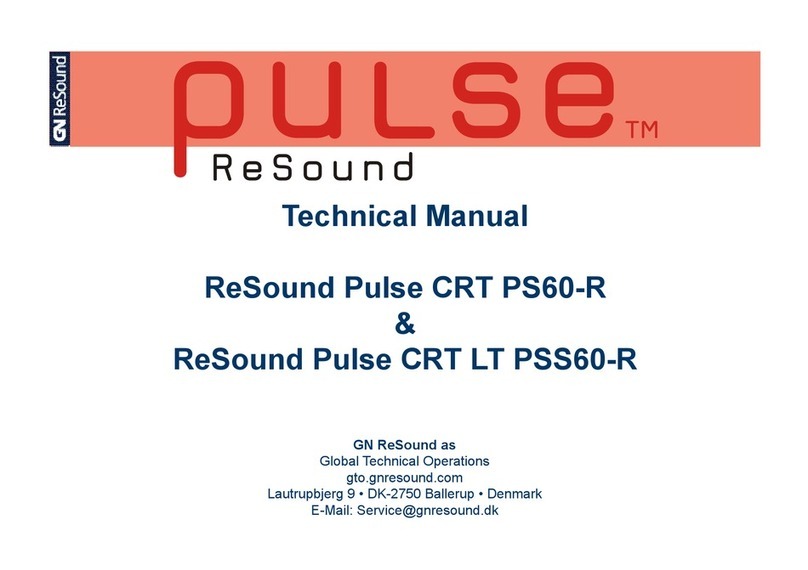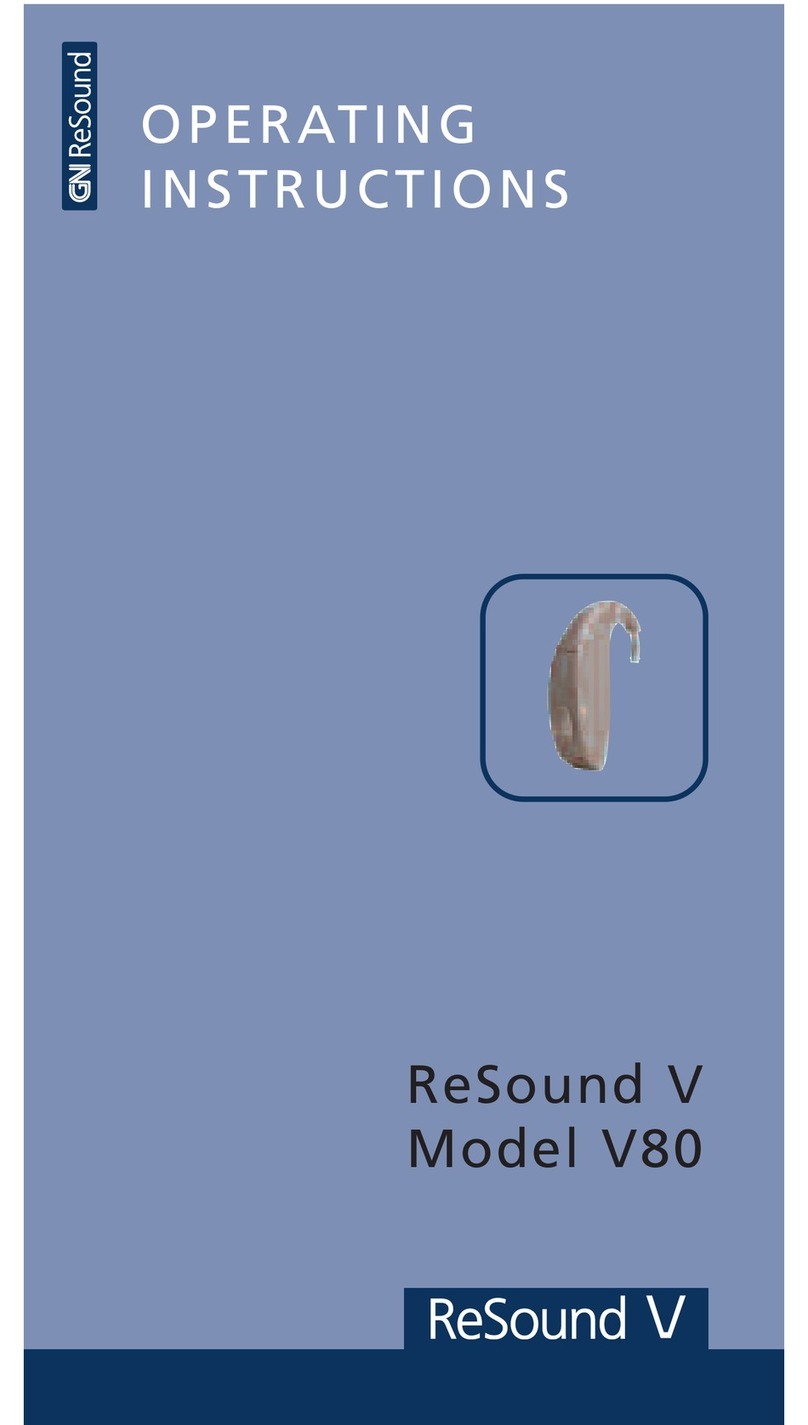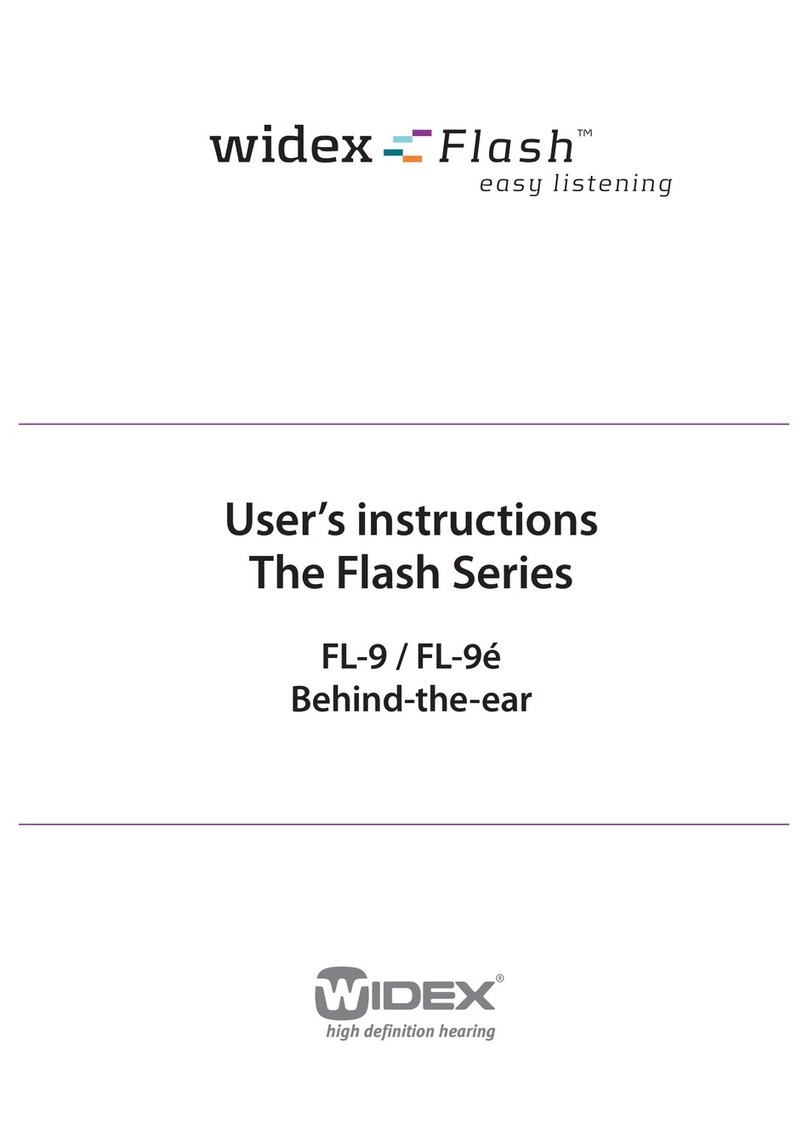GN Resound 6060-DI User manual
Other GN Resound Hearing Aid manuals

GN Resound
GN Resound Discover V Series User manual

GN Resound
GN Resound ONE User manual

GN Resound
GN Resound Discover V Series User manual

GN Resound
GN Resound LXR45 User manual

GN Resound
GN Resound Danalogic 6 6070-DVI User manual

GN Resound
GN Resound Pulse CRT PS60-R User manual

GN Resound
GN Resound V80 User manual
Popular Hearing Aid manuals by other brands
Oticon Medical
Oticon Medical Ponto SoundConnector Instructions for use
Siemens
Siemens Life micon user guide

Starkey
Starkey Destiny Operation manual
Audicus
Audicus The Icon instruction manual

Advanced Bionics
Advanced Bionics Slim HP Standard Instructions for use

Widex
Widex DREAM440 THE DREAM SERIES User instructions




















